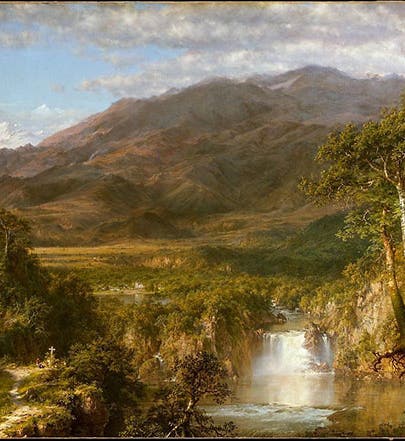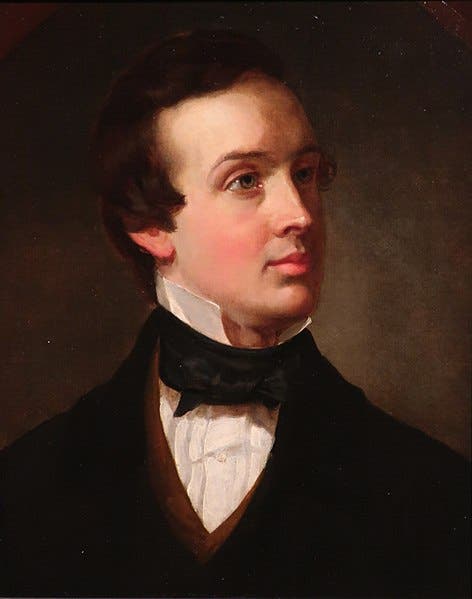Scientist of the Day - Frederic Church
Frederic Edwin Church, am American landscape painter, was born May 4, 1824, in Hartford, Connecticut. Church was a member of the Hudson River School of American landscape artists, having been the pupil – the only pupil – of Thomas Cole. He was also a great admirer of the famed German explorer Alexander von Humboldt. In 1853 and 1857, Church made two trips to equatorial South America, basing himself in Quito, Ecuador, thus following in the footsteps of Humboldt, who had explored in this area in 1799-1804. Church made sketch after sketch of the volcanic peaks of the Andes and the lush foliage of the valleys, and when he returned home, he created incredibly detailed landscapes in which Nature was the one and only subject. One of the paintings completed after his first trip was Cotopaxi (1855), now in the National Museum of American Art in Washington, D.C. Another was the Mountains of Ecuador (1855), which you can see in the Wadsworth Athenaeum in Hartford.
One lovely fruit of the second trip to Ecuador was a small but gorgeous painting, Cayambe (1858), now in the Museum of Fine Arts in Boston. But the masterpiece to emerge from Church’s Humboldt-inspired wanderings was undoubtedly The Heart of the Andes, finished in 1859 (first image). So certain was Church of the appeal of this magnificent large landscape that he made it the subject of a one-painting exhibition at the Tenth Street Building near Broadway in New York City in May of 1859. Some 12,000 New Yorkers paid 25 cents apiece to view the painting. There are no photos of the original exhibition, but it was displayed again in 1864, and we have a photo of this. Using the photo as a guide, the original mount was recreated early in the 21st century, presumably for a special exhibition. The Heart of the Andes is now framed much more conventionally and is on display in the Metropolitan Museum of Art in New York. Here is what it looks like from reasonably close, with an admiring onlooker to give a sense of scale, and here is a second view in which it is overshadowed, at least in size, by its roommate, Washington Crossing the Delaware.
Heart of the Andes is justly famous as a nature painting because the detail goes "all the way down", like a fractal. Original viewers in 1859 used binoculars to see all that detail. We have the benefit of macrophotography. You can see here a close-up of the right front corner of the painting. One could enlarge quite a bit further (and you can do this by clicking on the image) without losing any resolution,
Some years ago we wrote a profile of Isaac Israel Hayes, an Arctic explorer who witnessed a spectacular aurora in 1864. His account inspired his friend Church to create another beautiful painting, Aurora Borealis (1865), which you may see at the link to Hayes.
The oil portrait of Frederic Church is by Edward Harrison May and is in the National Academy of Design in New York (second image).
Dr. William B. Ashworth, Jr., Consultant for the History of Science, Linda Hall Library and Associate Professor emeritus, Department of History, University of Missouri-Kansas City. Comments or corrections are welcome; please direct to ashworthw@umkc.edu.







